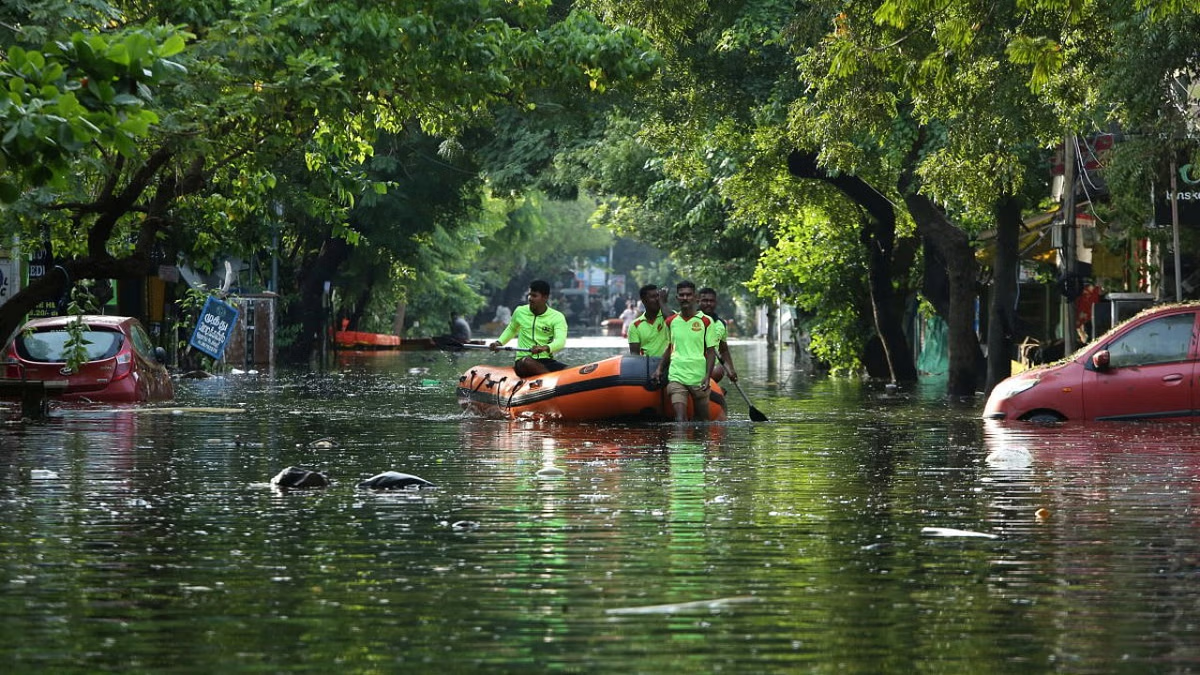Chennai’s battle against devastating monsoon floods and rising climate stress may find relief through nature itself.
A recent study by the Centre for Study of Science, Technology and Policy (CSTEP) proposes a ₹2,203 crore investment in nature-based solutions, with wetlands, green rooftops and permeable surfaces playing a central role in reducing flood risk and improving liveability across the city. The report, titled Urban Greenprints, makes a strong case for integrating ecological systems into the city’s infrastructure. It suggests that Chennai’s neighbourhood lakes and river catchments—many of which have been neglected or encroached upon—can be revitalised to act as natural buffers. These wetlands, once restored, will absorb stormwater during heavy rains, reducing surface runoff and preventing waterlogging in flood-prone zones.
This approach could help the city save as much as ₹500 crore each year in damages caused by urban flooding and extreme heat. According to CSTEP, this not only presents a viable economic return—recovering investment within five years—but also supports biodiversity, groundwater recharge and urban cooling. As Chennai continues to expand, urban development has often come at the cost of its wetlands. Large-scale concretisation has disrupted natural drainage patterns, making certain low-lying areas dangerously vulnerable during heavy rains. The proposed wetland revival programme aims to reverse this pattern by treating wetlands not as obstacles but as vital infrastructure assets.
The plan also includes complementary interventions. Permeable pavements in streets and parking lots will help rainwater percolate back into the ground. Rooftop gardens—especially in densely built-up North Chennai—can increase the city’s green cover by up to 70 per cent in targeted wards. These gardens not only lower indoor temperatures but also absorb rainfall, helping manage stormwater and reduce urban heat. CSTEP’s report stresses that these changes should not be seen as isolated projects, but rather as integral to Chennai’s urban planning and budgeting processes. A decentralised and community-driven model, it argues, will allow each ward to identify context-specific interventions—starting small, but with scope for scale and long-term impact.
The report also highlights successful pilot programmes already underway. The Chennai Urban Farming Initiative has introduced rooftop and mobile gardens in schools, homes, and shelters, producing food and providing cooling benefits. Wetlands around the city, though often overlooked, have begun to show potential when protected and integrated into local neighbourhood planning. “Wetlands are not just water bodies; they are climate assets,” said Lakshmi Menon, Senior Analyst at CSTEP. “Chennai’s path to resilience will depend on how well it blends built infrastructure with ecological systems. Restoring wetlands and using green surfaces smartly is no longer optional it is critical to the city’s survival.”
As climate extremes become more frequent, Chennai’s strategy to lean on its natural systems for protection offers a hopeful and replicable model for other Indian cities. By restoring what was once lost, the city may be able to reclaim not just its landscape—but its future.
Also Read :Mumbai and Pune brace for heavy rains as pre-monsoon conditions develop




